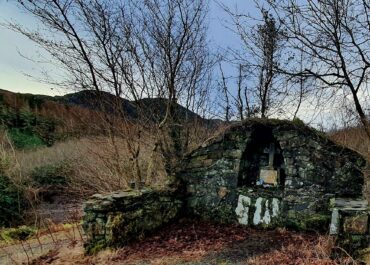Penal Mass station, Glenalla, Co. Donegal
In the parish of Tullyaughnish, County Donegal, there once stood a mysterious stone structure that captured the imagination of antiquarians and locals alike.
Penal Mass station, Glenalla, Co. Donegal
First recorded as a dolmen by William Copeland Borlase in 1897, this ancient feature had already gained a rather different reputation amongst the local population by the time the Ordnance Survey Memoirs were compiled in 1834. According to those early surveyors, the stones weren’t merely prehistoric remains; they served as an altar where local people came to worship, suggesting the site had been repurposed for religious gatherings during more recent centuries.
This transformation from ancient megalith to penal Mass station speaks to a broader pattern across rural Ireland, where prehistoric monuments often became focal points for Catholic worship during the Penal Laws era. When public celebration of Mass was forbidden, these remote and already sacred spaces provided both practical shelter and spiritual continuity for communities maintaining their faith under difficult circumstances. The fact that locals in the 1830s still recognised it as a place of worship indicates the site retained its religious significance well into the 19th century, long after the Penal Laws had been relaxed.
Today, nothing remains of this intriguing monument at Glenalla, leaving us to piece together its story from scattered historical references. The site appears in various archaeological surveys throughout the late 19th and 20th centuries, including mentions by geologist George Henry Kinahan in 1889 and its inclusion in the Record of Monuments and Places in 1995, but by then it existed only in memory and written records. Whether it was a genuine prehistoric dolmen that found new purpose as a Mass rock, or perhaps always served a ritual function that evolved through the millennia, its complete disappearance means we’ll never know for certain.


